September 4, 2017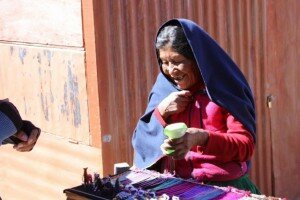
By: Tyler Su
Woodland School ‘17
Bellarmine College Prep ’21
Over the summer, I was fortunate to go to Peru and deliver solar lamps to people in need. I traveled across Peru, doing homestays and seeing different ways of living within the country. Go back six months before the Peru trip, I was sitting in my Capstone class trying to find a world problem to tackle. I eventually came to the topic “Lack of Electricity in Remote Areas.” After four months of doing research and writing papers, I started my fundraising with One Million Lights. By the end of my fundraising, I was able to bring fifty solar lamps with me to Peru.
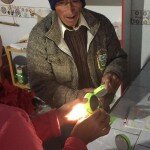 The first distribution stop was at a homestay in Sibayo, a small town located in the Chila Mountain range of the Andes. The living condition there was fair, the family we stayed with had electricity but they said it was very expensive. On rainy or stormy days, the family would have no electricity. Hosting homestays is a way for them to earn more money, and having renewable consistent lighting is important for their tourism business. With the solar lamps, the family could save money on electricity bills and have light during the rainy season for themselves and their guests.
The first distribution stop was at a homestay in Sibayo, a small town located in the Chila Mountain range of the Andes. The living condition there was fair, the family we stayed with had electricity but they said it was very expensive. On rainy or stormy days, the family would have no electricity. Hosting homestays is a way for them to earn more money, and having renewable consistent lighting is important for their tourism business. With the solar lamps, the family could save money on electricity bills and have light during the rainy season for themselves and their guests.
The second stop I went to was the famous Lake Titicaca, and we visited 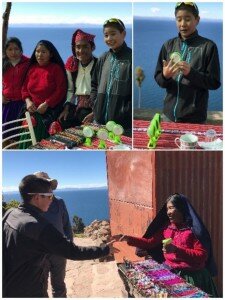 an island on the lake called Taquile Island. What was interesting about the island was that the government gave one solar panel to each house, otherwise the citizens won’t have access to electricity at all. Our guide took us to the other half of the island that were less visited by the tourists, and along the way, I handed out lamps to families. Our last stop was lunch at a local family’s home. When I showed the family the solar lamps I brought with me, they were filled with joy and the father said that they could go out at night which made me smile. The fact that the father already was thinking of uses for the lamps showed how my simple act can have a positive effect on them.
an island on the lake called Taquile Island. What was interesting about the island was that the government gave one solar panel to each house, otherwise the citizens won’t have access to electricity at all. Our guide took us to the other half of the island that were less visited by the tourists, and along the way, I handed out lamps to families. Our last stop was lunch at a local family’s home. When I showed the family the solar lamps I brought with me, they were filled with joy and the father said that they could go out at night which made me smile. The fact that the father already was thinking of uses for the lamps showed how my simple act can have a positive effect on them.
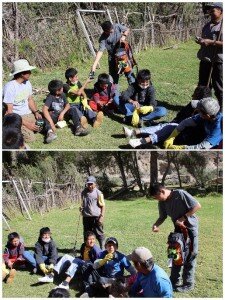 The second to last stop was in Sacred Valley. I went to a small community center in the town of Cachiccata in Ollantaytambo. Over there, twelve kids were waiting for us to do a community cleanup, where we all went out, picked up trash, and then the guide and I taught the kids about sorting and recycling trash, and how to earn money by depositing plastic bottles. Afterwards, it was time to show them the solar lamps. I explained to them how the solar lamps have different uses, but also how it helped the environment. The kids were so enthusiastic and willing to learn, I loved how the kids were so happy even in the condition they were living in.
The second to last stop was in Sacred Valley. I went to a small community center in the town of Cachiccata in Ollantaytambo. Over there, twelve kids were waiting for us to do a community cleanup, where we all went out, picked up trash, and then the guide and I taught the kids about sorting and recycling trash, and how to earn money by depositing plastic bottles. Afterwards, it was time to show them the solar lamps. I explained to them how the solar lamps have different uses, but also how it helped the environment. The kids were so enthusiastic and willing to learn, I loved how the kids were so happy even in the condition they were living in.
The last stop was at a coffee farm located in the middle of the Inca 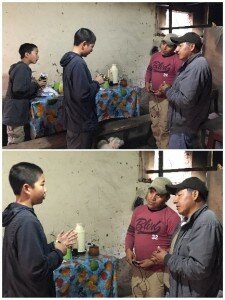 highland jungle, Santa Teresa. The farmer had electricity but like most remote areas, the cost of electricity is very expensive. I was so surprised that when I gave him the solar lamps, instead of saying “I will use these for me,” he immediately thought of giving one lamp to each of his workers, so that his workers could walk home safely at night through the jungle. He saved two lamps for himself where he put one in his bedroom and the other as a flash light to do work at night.
highland jungle, Santa Teresa. The farmer had electricity but like most remote areas, the cost of electricity is very expensive. I was so surprised that when I gave him the solar lamps, instead of saying “I will use these for me,” he immediately thought of giving one lamp to each of his workers, so that his workers could walk home safely at night through the jungle. He saved two lamps for himself where he put one in his bedroom and the other as a flash light to do work at night.
Reflecting back on my trip to Peru, I was shocked to see how people lived with limited electricity, but I was more amazed to see how happy they are and appreciative with what they have. My project shows how something small, like a solar lamp, can have a big impact on the people who most need it. I’m glad that I did this project.

